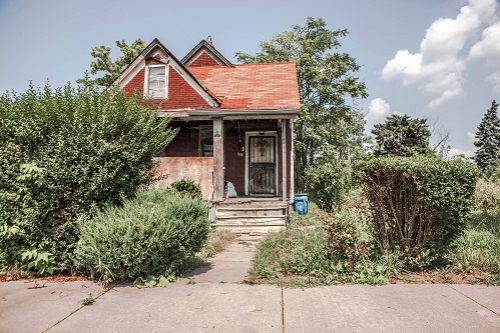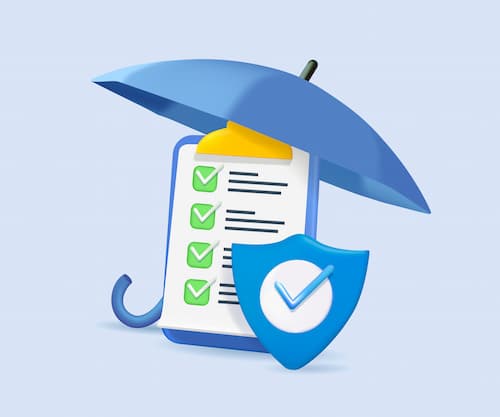- The best homeowners insurance companies in 2025
- The best regional home insurance companies
- Best home insurance companies by category
- The best homeowners insurance company for you: How to choose
- Types of homeowners insurance policies
- Find the best homeowners insurance in your state
- Understanding home insurance
- Methodology
The best homeowners insurance companies in 2025
Amica, State Farm and Allstate are the best insurance companies for homeowners overall for 2025. Amica earned 4.73 stars out of 5 for its first-place finish.
| 2025 Rank | 2024 Rank | Company | Overall rating | Customer satisfaction rating |
|---|---|---|---|---|
| 2025 Rank: 1 | 2024 Rank: 1 | Comapny name: Amica | Overall rating: | Customer satisfaction rating: |
| 2025 Rank: 2 | 2024 Rank: 2 | Comapny name: State Farm | Overall rating: | Customer satisfaction rating: |
| 2025 Rank: 3 | 2024 Rank: 3 | Comapny name: Allstate | Overall rating: | Customer satisfaction rating: |
| 2025 Rank: 4 | 2024 Rank: 7 | Comapny name: Progressive | Overall rating: | Customer satisfaction rating: |
| 2025 Rank: 5 | 2024 Rank: 4 | Comapny name: Nationwide | Overall rating: | Customer satisfaction rating: |
| 2025 Rank: 6 | 2024 Rank: 5 | Comapny name: Farmers | Overall rating: | Customer satisfaction rating: |
| 2025 Rank: 7 | 2024 Rank: 6 | Comapny name: Travelers | Overall rating: | Customer satisfaction rating: |
| 2025 Rank: NR | 2024 Rank: NR | Comapny name: USAA* | Overall rating: | Customer satisfaction rating: |
Amica: 4.73
Earning the top spot overall, Amica is the cheapest home insurance company on our survey for 2025 as well. Its average rate of $2,000 a year is $600 lower than the national average of $2,601.
Amica also earned first place in J.D. Power’s claims satisfaction survey for 2024 and has an A+ rating with AM Best.
Read more about Amica homeowners insurance
State Farm: 4.55
State Farm is the top insurance company in America by market share, and it always ranks among the best home insurance companies. This year, it landed at No. 2 on the list and shines for customer service and ease of service; 93% of customers plan to renew.
State Farm operates through captive agents but has a robust online/mobile system for quoting and managing your policy.
Read more about State Farm homeowners insurance
Allstate: 4.40
Low rates and a high customer satisfaction rating landed Allstate in the No. 3 spot. One of the best-known names in insurance, Allstate is among the biggest by market share and is a very stable company.
Allstate offers a good array of home insurance discounts to lower rates and also offers a solid home and auto bundling discount.
Read more about Allstate homeowners insurance
Progressive: 4.07
Known mostly for car insurance, Progressive has also become a top pick for home insurance. Low rates and bundling discounts attract customers, and good customer service keeps them loyal.
Progressive writes its own home insurance program in nearly every state but also offers policies through its agency with other companies.
Read more about Progressive homeowners insurance
Nationwide: 4.05
Not quite as national as its name suggests, Nationwide home insurance is available in most, but not all, states. Home insurance rates are a little above the national average, but the company’s 18% bundling discount will help bring rates down.
The company performed well in the survey and offers a wide array of insurance products, making it a top pick for one-stop shopping.
Read more about Nationwide homeowners insurance
Farmers: 3.86
Although Farmers' rates came in above competitors on average, the company has a long, strong reputation and scores very well in terms of claims handling with J.D. Power’s independent survey.
The home and auto bundling discount is 18%, about average, and there are plenty of other discounts available from Farmers.
Read more about Farmers homeowners insurance
Travelers: 3.80
Travelers landed in the No. 7 spot on Insure.com’s survey, with solid scores in most categories and 84% of customers recommending it. The company also has loyal customers, with 91% planning to renew, and has a top AM Best rating of A++.
Travelers’ average home insurance rates are higher than most others ranked, but rates vary widely by location, so they might be cheaper for you.
Read more about Travelers homeowners insurance
Companies not ranked: While USAA was well-reviewed by customers, the company caters only to military families and veterans. If that’s you, it’s likely your best bet.
However, we chose to rank only companies without eligibility requirements. Liberty Mutual and its subsidiary, Safeco, were also not ranked, as they do not provide rates to our data partner, Quadrant. Finally, several companies were not included in the rankings due to a lack of sufficient responses in the survey for an accurate comparison.
“The best home insurance companies will have a long-lasting, reputable business. They should be timely and fair when handling claims for their policyholders. They should be able to offer an array of coverages to fit each customer's needs, as well as offer several discounts to insureds to help save money and encourage home safety features. The 'best' home insurance companies should be able to address all customers' questions and concerns, and provide excellent customer service at all times.”
Lauren McKenzie, senior agent, A Plus Insurance in Liberty, S.C.
The best regional home insurance companies
Our ranking included only national home insurance companies, defined as companies offering coverage in more than half of states. However, there were three large regional companies that performed very well in our analysis.
Erie: 4.62
Erie is the top-ranked regional homeowners insurance company, with a score that places it just behind national winner Amica. Erie earned a 100% score for ease of service as well as for claims satisfaction.
Read more about Erie homeowners insurance.
Auto-Owners: 4.48
Low rates and an excellent customer satisfaction score make Auto-Owners a top pick among regional insurers. Of the customers surveyed. 90% said they plan to renew.
Read more about Auto-Owners homeowners insurance.
American Family: 4.07
AmFam performed very well in most categories of the survey, with an 86% score for satisfaction.
Read more about American Family homeowners insurance
Best home insurance companies by category
Some home insurance companies really shine in particular categories. Below are the top picks from the survey for price, customer satisfaction and more. For these categories, we included all companies for which data is available, including regional companies and those not ranked.
Cheapest home insurance: Amica
At an average of $2,000 a year, Amica has the cheapest rates of any company on our list. Allstate came in second at $2,098.
Best for customer satisfaction: Amica
In our survey, 96.2% of customers said they were satisfied with the customer service from Amica. Only USAA, which is not included due to its eligibility requirements, rated better.
Best for ease of service: Erie
Erie customers ranked it at the top for ease of service, beating out State Farm and other top-rated companies with a 100% satisfaction score.
Best for policy offerings: Nationwide
Our survey results found customers rated Nationwide better than any other company in the survey for policy offerings at a score of 96.4%.
Most recommended: Erie
An impressive 92.9% of Erie customers said they would recommend the company to others. If included, USAA would have won this category at 95.9%.
Most trustworthy: Safeco
Safeco came out on top for trust in a very difficult category. Of the Safeco customers surveyed, 95.7%% said they trust the company.
Best for renewals: Safeco
Safeco once again took top honors for renewals with 100% of customers planning to renew their home insurance.
How we compared the best home insurance companies
We surveyed current home insurance customers and gathered average rates fielded by Quadrant Data Services. In addition, the editors gathered discount details and ratings from sources like the National Association of Insurance Commissioners (NAIC) and AM Best to help you compare home insurance companies with ease. See the full methodology below.
The best homeowners insurance company for you: How to choose
The best insurance company for your neighbor may not be the best pick for you. That’s why it’s important to shop around and look into each company’s background.
“When choosing a home insurance company, you should look into the company to determine how long they've been in business and what their customers think of their service overall. Check out real customer reviews and look for things like billing issues, claims issues, overall customer service, etc. It is important to find an insurance provider that offers the coverage you need for your home for an affordable price. Mostly, it is important to find a home insurance company that you feel comfortable communicating with and you feel will handle any billing issue or claim efficiently and in a timely manner,” McKenzie says.
The most important thing to remember is that a cheap rate isn’t everything. The best home insurance company for you is the one you can count on to be there when you need it.
“There is nothing more frustrating than being with an insurance company that is fighting you on your claim because they do not want to pay it or they have issues with your billing, etc. Customer service and the claims process is No. 1 when searching for a good, reputable home insurance provider,” McKenzie says.
Types of homeowners insurance policies
The most common type of homeowners insurance policy is an HO-3, which is a standard package policy. There are a few other types of policies, known as “forms,” which have different codes. These provide for specific needs. Here’s an overview.
| Policy form | Type of coverage |
|---|---|
| HO-1 (Basic form) | Actual cash value (dwelling and contents), limited named perils |
| HO-2 (Broad form) | Replacement cost (dwelling), actual cash value (contents), extended list of named perils |
| HO-3 (Special form) | Replacement cost (dwelling, contents if selected), all perils. The most common home insurance policy. |
| HO-4 (Contents broad form) | Renters insurance. Covers contents, replacement cost available, all perils |
| HO-5 (Comprehensive form) | Replacement cost (dwelling and contents), all perils, higher coverage levels |
| HO-6 (Unit-owners form) | Condo insurance. Building property, personal property, all perils |
| HO-7 (Mobile home form) | HO-3 coverage for mobile homes |
| HO-8 (Modified coverage form) | Actual cash value (dwelling and contents), named perils. Coverage for homes that don’t meet other form requirements, often due to age. |
Find the best homeowners insurance in your state
| State | Average annual rates for $200,000 in dwelling coverage | Average annual rates for $300,000 in dwelling coverage | Average annual rates for $400,000 in dwelling coverage | Average annual rates for $600,000 in dwelling coverage | Average annual rates for $1,000,000 in dwelling coverage |
|---|---|---|---|---|---|
| Alabama | $2,391 | $3,147 | $3,798 | $5,144 | $7,056 |
| Alaska | $1,355 | $1,708 | $2,064 | $2,779 | $4,098 |
| Arizona | $1,906 | $2,490 | $3,063 | $4,086 | $5,161 |
| Arkansas | $3,328 | $3,958 | $4,675 | $6,099 | $7,768 |
| California | $1,043 | $1,405 | $1,772 | $2,598 | $4,266 |
| Colorado | $3,169 | $4,099 | $4,662 | $5,542 | $7,384 |
| Connecticut | $1,750 | $2,231 | $2,707 | $3,641 | $4,762 |
| Delaware | $1,078 | $1,384 | $1,729 | $2,474 | $3,406 |
| Florida* | $3,773 | $4,419 | $4,984 | $5,854 | $6,574 |
| Georgia | $1,760 | $2,302 | $2,881 | $4,006 | $5,743 |
| Hawaii | $461 | $613 | $791 | $1,154 | $1,831 |
| Idaho | $1,476 | $1,961 | $2,449 | $3,427 | $5,288 |
| Illinois | $2,423 | $3,062 | $3,587 | $4,390 | $5,752 |
| Indiana | $2,313 | $2,991 | $3,620 | $4,451 | $5,749 |
| Iowa | $2,022 | $2,654 | $3,230 | $4,388 | $6,267 |
| Kansas | $3,638 | $4,843 | $5,688 | $6,798 | $8,310 |
| Kentucky | $2,486 | $3,326 | $4,153 | $5,182 | $6,452 |
| Louisiana | $2,822 | $3,594 | $4,409 | $5,277 | $5,979 |
| Maine | $1,021 | $1,391 | $1,741 | $2,510 | $3,972 |
| Maryland | $1,318 | $1,715 | $2,131 | $3,028 | $4,700 |
| Massachusetts | $1,303 | $1,640 | $1,998 | $2,746 | $4,168 |
| Michigan | $1,825 | $2,411 | $2,956 | $3,564 | $4,680 |
| Minnesota | $1,828 | $2,420 | $2,999 | $4,308 | $5,991 |
| Mississippi | $2,646 | $3,380 | $3,941 | $4,700 | $6,039 |
| Missouri | $2,638 | $3,543 | $4,114 | $4,956 | $6,641 |
| Montana | $2,523 | $3,289 | $3,831 | $4,271 | $5,825 |
| Nebraska | $3,809 | $4,800 | $5,904 | $7,365 | $8,451 |
| Nevada | $1,093 | $1,467 | $1,853 | $2,707 | $4,135 |
| New Hampshire | $948 | $1,221 | $1,488 | $2,032 | $3,064 |
| New Jersey | $1,171 | $1,526 | $1,894 | $2,619 | $3,915 |
| New Mexico | $1,829 | $2,647 | $3,489 | $4,529 | $5,908 |
| New York | $1,340 | $1,816 | $2,349 | $3,276 | $4,904 |
| North Carolina | $2,141 | $2,941 | $3,398 | $4,375 | $6,031 |
| North Dakota | $2,431 | $3,147 | $3,898 | $4,682 | $6,991 |
| Ohio | $1,805 | $2,160 | $2,613 | $3,265 | $4,301 |
| Oklahoma | $4,442 | $5,858 | $7,012 | $8,426 | $8,865 |
| Oregon | $1,347 | $1,755 | $2,185 | $3,016 | $4,108 |
| Pennsylvania | $1,475 | $1,911 | $2,130 | $2,902 | $3,908 |
| Rhode Island | $1,505 | $1,950 | $2,381 | $3,327 | $5,235 |
| South Carolina | $2,061 | $2,678 | $3,219 | $4,319 | $5,765 |
| South Dakota | $2,607 | $3,390 | $3,970 | $5,353 | $7,420 |
| Tennessee | $2,369 | $3,060 | $3,737 | $4,873 | $6,573 |
| Texas | $2,951 | $3,851 | $4,643 | $5,602 | $6,799 |
| Utah | $1,416 | $1,802 | $2,161 | $2,876 | $4,201 |
| Vermont | $974 | $1,263 | $1,555 | $2,147 | $3,269 |
| Virginia | $1,645 | $2,151 | $2,694 | $3,430 | $4,314 |
| Washington | $1,260 | $1,612 | $2,017 | $2,801 | $4,314 |
| Washington, D.C. | $984 | $1,342 | $1,703 | $2,384 | $3,699 |
| West Virginia | $1,465 | $1,911 | $2,354 | $3,271 | $5,041 |
| Wisconsin | $1,274 | $1,662 | $2,038 | $2,711 | $4,091 |
| Wyoming | $1,351 | $1,897 | $2,490 | $3,703 | $5,597 |
*Some state rates will vary based on the addition of a hurricane deductible and may be much higher when included.
Understanding home insurance
Homeowners insurance covers a few basic things. Although the type of policy determines some of the coverage, you can expect your homeowners insurance to cover:
Dwelling. The dwelling coverage is the calculated replacement cost of your home if it needs to be rebuilt from the ground up.
Personal property. Personal property coverage is for the contents of your home, including everything from your clothes to your furniture. It’s usually set at 50-70% of the dwelling amount.
Personal liability. The personal liability portion of your policy pays for any damages or injuries for which you are responsible, as well as legal fees. The most common choice for liability is $300,000.
Additional living expenses/loss of use. This coverage pays for living expenses, like a hotel room or restaurant meals, if you can’t live at home during repairs from a covered claim.
From there, a number of extra coverages are available, some of which are included and some of which are options you can add. This includes things like water and sewer backup, coverage for high-value items, and even coverage for identity theft.
Home insurance covers either named perils or all perils. The difference is that named perils covers only the risks that are specifically listed in the policy. An all perils policy will pay for damage from any risk unless it’s specifically excluded.
Methodology
70+
Carriers reviewed
1,750
Consumers surveyed
60+
Insurance metrics examined
34,600
ZIP codes examined
Our sister site, Insure.com surveyed more than 1,750 insurance consumers (1,011 people with home insurance) in the fall of 2024. The survey was conducted by online market research company Slice MR.
Respondents were asked to name their home insurer and then grade it in the following categories:
- Customer satisfaction
- Ease of service
- Policy offerings
- Claims satisfaction
- Digital experience (website/app)
- Insurance shopping and buying process
- Billing process
- Discounts offered
- Fair rate increases over time
- Older home coverage
- Extra coverage included as standard
- Home and auto bundling
The percentage of respondents who said they were satisfied or very satisfied with their insurer is presented in the results.
We then asked respondents to provide a yes or no response to indicate their agreement with the following statements:
- I plan to renew with my current home insurance company
- I would recommend my home insurance company to others
- I trust my home insurance company
The percentage of respondents who said yes is presented in the results.
The editors compiled the survey results and then selected – based on the number of survey responses – the top companies for further evaluation.
They then collected AM Best data, which measure financial strength, and National Association of Insurance Commissioners’ complaint data, which ranks a company by the number of customer complaints it receives. The Insure.com team identified the NAIC codes of each underwriting company for each carrier and calculated a weighted average complaint index, weighted by the annual written premium. The associated NAIC complaint index score was used in the calculations.
They also collected insurance rate data from Quadrant Information Services.
With the help of Prof. David Marlett, Ph.D., Managing Director of the Brantley Risk and Insurance Center at Appalachian State University, the editors created a rating system to determine which insurance companies were best in each sector. For home insurers, we took the following and gave each a weight.
- Survey: 40% of the total score (10% customer satisfaction, 10% recommended, 10% renewal rate and 10% claims handling)
- AM Best: 25% of total score
- Annual premium: 20% of total score
- NAIC: 15% of total score
Each insurer was awarded between half a star and 5 stars. No company in the ranking received less than half a star in any category, and 5 stars was the most any insurer could receive.





